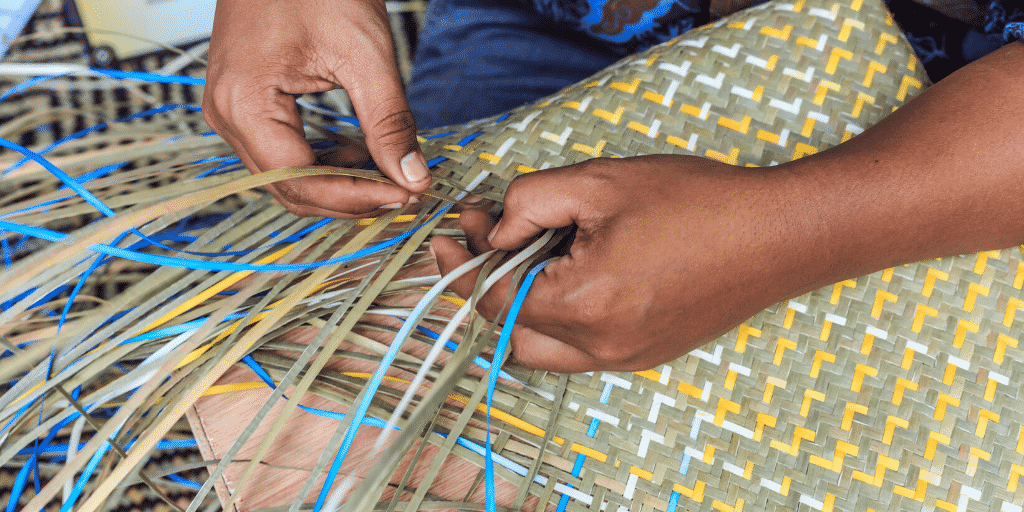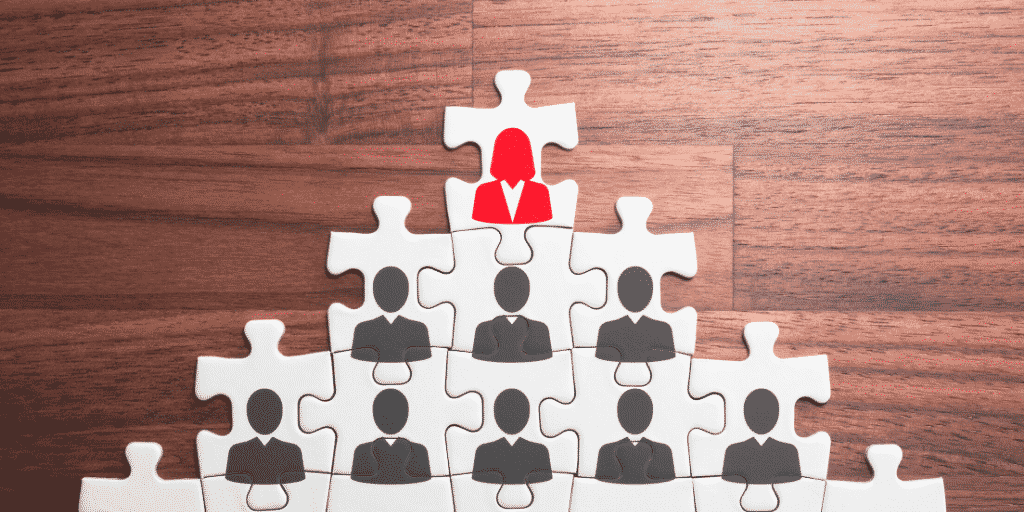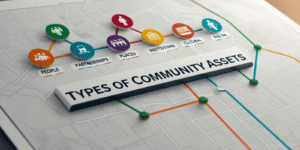
I’m a Natural Network Weaver. But Am I a Good Network Leader?
I’m not going to lie: I’m a pretty amazing visionary. I’m great at getting people excited about something, moving them to acton, getting them to join me in a cause or movement. I’ve started a number of clubs, coalitions, networks, and organizations …even city-wide, cross-sector coalitions that address enormous societal issues. I’m told Im a natural leader. In industry terms, I’m a network weaver.
But also honestly – almost all of the things I’ve started have failed.
People stop following me at some point.
The structure falls apart – because there wasn’t really a great structure.
The cause suffers because the whole movement rode on my charisma, my vision, my excitement – and when I burn out, so does the movement.
Unfortunately, I don’t think this is rare. One of the biggest mistakes us network weavers make is trying to do it all, and not allowing the movement to grow and be sustainable beyond ourselves. As I’ve experienced personally, network weavers/visionaries/leaders can break apart a network all too easily.
But weavers are crucial to creating movement, building relationships, and network building: “We call this active leader a network weaver….The weaver has the vision, the energy, and the social skills to connect diverse individuals and groups and start information flowing to and from them.” (Krebs and Holley, 2002-2006, p. 6-7)
So how do we weavers do our thing but also ensure we are setting up the collaboration for long-term success?
Empower, Equip, Entrust.
For a network to truly be successful, weavers also need to empower, entrust, and equip others to step into the role of network weaver at some point as well, so the movement can grow, the collaboration can expand into large networks and multi-hub communities (Krebs and Holley, 2002-2006, p. 17), and the whole network is not on the shoulders of one person:
“In order to accommodate new connections, the weaver must teach others how to weave their own network. Training in network building is important at this juncture …As the overall network grows, the role of the weaver changes from being the central weaver, to being a facilitator of network leaving in the community – coordinating with, and mentoring of other network weavers …This transition from network weaver to network facilitator is critical …If the change is not made then the community network remains dependent on the central weaver and his/her organization…This transition is necessary for the network to increase its scale, impact, and reach.” (Krebs and Holley, 2011, p. 9-11)
This is all so important, and something I have (clearly) failed to do in the past. Us natural network weavers must be intentional about doing this – but HOW? What are the specific steps, the systems and trainings we can implement, to ensure we are truly delegating, empowering, mentoring, raising up other potential weavers so that the overall mission is not dependent on one or two weavers and their orgs – and does not suffer and fall apart if those weavers leave, as has been the reality in my case.
How do we who are natural connectors, natural visionaries, natural collaborators and self-starters – how do we teach others these natural skills? And:
– What does this “training in network building” (Krebs and Holley) actually look like? More importantly, is it truly quantifiably effective at identifying potentially gifted network weavers and training them in the skills they are lacking? – How do we know when they’re ready (enough)? – At what point do we let certain things fall through the cracks, not be done as well as us natural leaders/weavers would do them, etc, for the sake of other potential weavers learning and leading?
These are the questions that come to my mind when reading about network weavers and thinking of my own experiences as a weaver. And I know I’m not the only one asking these questions.
We need backbones and weavers – but we need networks more Examples like the Strive collective impact network answer some of these questions – but not all. The Strive CI model has systems, structures, and a unified vision – after reading more about their network, I suspect many of the mistakes I’ve made in the past have been due to a lack of systems and structure; even if other weavers and leaders had not been identified and empowered yet in the neworks I led, the existence of established systems, procedures, and structure would have prevented everything from falling apart when I left.
“Unlike most collaborations, collective impact initiatives involve a centralized infrastructure, a dedicated staff, and a structured process that leads to a common agenda, shared measurement, continuous communication, and mutually reinforcing activities among all participants.” (Kania and Kramer, 2011, p. 37-38) It would be great to see specific materials and resources from Strive that detail structures and trainings they use to delegate, teach, and empower potential leaders in their initiative, as well as ensure collective responsibility and accountability in their network.
Even in well-run initiatives such as Strive, though, we can see the potential downfalls of using the collective impact model – specifically, the danger of relying so heavily on backbone orgs in a network. It is the general opinion of many in the network-building world that effective collaboration cannot actually occur without a backbone organization: “The expectation that collaboration can occur without a supporting infrastructure is one of the most frequent reasons why it fails.” (Kania and Kramer, 2011, p. 40)
Others argue though that relying so much on one organization – and, often, an outside organization – can often hurt the very purpose and functioning of a NETWORK: “To reap the benefits of a network — the synergy that exists when a committed group of organizations and people work together to solve a problem — a structure must exist that does not require a perpetual external backbone as the glue. Instead, it requires an interconnected web and equitable distribution of authority, responsibility, accountability, and decision making.” (Varda, 2017, p. 56) The danger of relying too heavily on a backbone org, or on one main weaver/leader in a network, is that it can allow for “freeloaders” and actually undermines the purpose and potential of the network overall, hurting its chances of long-term success and survival.
“…the challenge is that to the extent that the backbone succeeds, it also can begin to erode community norms of collective accountability and engagement that gave rise to the network in the first place, undermining the very muscles and ligaments needed for coordinated action.” (Varda, 2017, p. 52)
Backbone orgs can definitely be helpful, but since they are currently relied on so heavily in the network/collective impact world, it must be a constant point of focus to make sure networks are TRULY collaborative networks. Spaces where all those represented are truly viewed and empowered equally, given a voice, representation, and responsibility in the mission of the network. With the presence of backbone orgs and the reality of burnout among so many visionaries/charismatic leaders/weavers, we must be intensely purposeful about highlighting potential leaders in our network organizations and training, equipping and empowering them to lead. We must also make sure each member org in a network feels heard and is held accountable to the mission of the network, for whatever role they are equipped to play. This is essential to ensure that a couple weavers, and/or a backbone org, does not carry the weight of the network on their shoulders – or else it is not truly a network.
Efficiency vs. empowerment
Much of the “backbone org is essential” thinking likely developed from an understandable desire for networks to be as EFFICIENT as possible, and assuming that having one main org would help with the overall “governance” and efficacy of the network. As Provan and Kenis talked about in their article, Modes of Network Governance (2008): “In networks, the primary tension regarding efficiency is between the need for administrative efficiency in network governance and the need for member involvement, through inclusive decision making…” (p. 242). Understandably, networks want to be as efficient as possible, so they often move toward a governance style that puts more responsibility on a “small subset of participants” (Provan and Kenis, p. 242), or one main backbone org, to make things as efficient and quick as possible. This often happens however, at the expense of involving ALL members of the network and utilizing all gits, which causes some members to burn out, fade way, or “freeload” and not contribute all they could to the network. This ends up hurting the network and overall efficiency of the mission in the long-run, and is something that must be paid attention to if networks DO have a backbone org. Backbone orgs can end up preventing what Krebs and Holley describe in their analysis – where an ideal network has many successful hubs with active cores and connected peripheries, and active members who all feel equal responsibility for the network. (Krebs and Holley, 2002-2006, p.17)
What models, what resources actually exist, that can be implemented by networks to establish systems and structures that help ensure true collaboration, shared accountability, true equality and ownership among orgs and members? Collaborative impact networks such as Strive seem to have developed a successful model to an extent, but is it actually replicable elsewhere? Many, many other orgs and networks are still struggling to figure out what a truly collaborative, empowering environment looks like. One recent study highlighted the struggles that some leaders are facing in their company to do this:
“When C-level executives learned that many employees did not feel empowered, they expressed surprise. From their perspective, the leadership team had taken deliberate and consistent actions to empower people, giving them opportunities to take on new challenges and grow their skill sets. However, over half of the employees interviewed across multiple areas of the organization said that their leaders would give them responsibilities, but would fail to let go of authority…” (Tiambo, 2019)
Letting go of authority, even if co-workers or employees might not be as “effective” as you yet, is crucial for the success of the org/network and the overall mission. As Leadership Coach Travis Stephens talks about, engaging and empowering potential leaders WILL involve giving authority to those who might not do the job as “well” as current leaders feel they do, and may likely involve some risk …but we have to do this if we want networks to ultimately succeed and not rise or fall on the back of one leader – or one main backbone organization:
“Give Them Authority. This one’s a tough one for me because I don’t always like giving people control. Yet, it’s necessary for people to feel empowered. Just know people are going to make mistakes. When they do, resist the urge to take back the control, and use it as a teachable moment.” (Stephens, 2017)
As I myself learned the hard way, giving authority away is key for the success of a collaboration. As hard as it might be for us natural weavers, we have to do it. The authors of this short article on leadership in the Harvard Business Review drive the point home, as they analyze some leadership decisions in corporate environments: “In chaotic times, an executive’s instinct may be to strive for greater efficiency by tightening control. But the truth is that relinquishing authority and giving employees considerable autonomy can boost innovation and success…Leadership is not really about delegating tasks and monitoring results; it is about imbuing the entire workforce with a sense of responsibility for the business.” (Amar, Hentrich, and Hlupic, 2009)
More specific resources and trainings for networks will be helpful. Until then, for us natural weavers and network leaders, doing what we can to establish a culture of accountability, shared responsibility, and equality in our organizations and networks, purposefully giving up control and authority to empower others to take ownership and lead – even of tasks we might do “better” – and demonstrating that we truly value the gifts and voices of others will go a long way toward helping our networks expand, be the most effective they can be, and achieving their overall mission…..long after one or two weavers or backbone organizations have faded away.
About the Author: Blythe Scott
Chief Of Staff at Office of Rep. James Coleman, Colorado State House of Representatives
Blythe serves as Chief of Staff for Representative James Coleman in the Colorado State House of Representatives. She is also an MPA student at the University of Colorado Denver School of Public Affairs where she studied under Dr. Varda.







